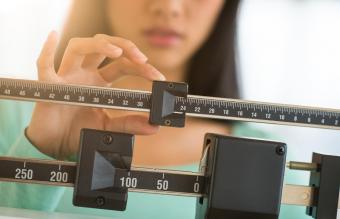
You probably already know that salmon is healthy, due to the fact that grilled or baked salmon is included in just about every healthy diet and meal plan. Knowing more about salmon's nutrition may help motivate you to eat more of this delicious super food.
Calorie Content
While salmon is packed with nutrients, it's a fairly low calorie food. A 3-ounce serving of grilled or baked salmon provides just 155 calories. A 3-ounce portion of salmon is about the size of a checkbook. Many healthy meal plans contain about 2,000 calories per day, and weight-loss diets often provide between 1,200 and 1,500 calories per day.
Macronutrients (Protein, Carbs, and Fat)
The main macronutrients in salmon are protein and fat. A 3-ounce portion of cooked salmon contains no carbs and no dietary fiber. However, the same serving size provides almost 22 grams of protein and 7 grams of dietary fat. Protein in salmon is complete, high-quality protein providing all of the essential amino acids your body requires on a daily basis. The fat in salmon is rich in omega-3 fatty acids, which are crucial for proper brain development in children and brain health in older adults.
Micronutrients (Vitamins and Minerals)
Salmon is loaded with essential vitamin and minerals as well. It's a good source of iron, phosphorous, potassium, zinc, vitamin B12, niacin, other B vitamins, folate, vitamin A, and vitamin D.
Potential Concerns
Due to the fact that fish and seafood may contain small amounts of mercury and other environmental toxins, pregnant women, nursing women, and young children should limit fish intake. Salmon is a low-mercury fish, but the U.S. Food and Drug Administration (FDA) recommends this population group enjoy just two to three servings of salmon (or other low-mercury fish) weekly.
Adding Salmon to Menus
There are many ways to incorporate salmon into healthy daily meal plans. Try baking or grilling it with marinade or seasonings of your choice, adding salmon to soups and salads, mixing it into casseroles, adding salmon to breakfast omelets, eating salmon burgers in place of hamburgers, or adding salmon to crab cakes.







